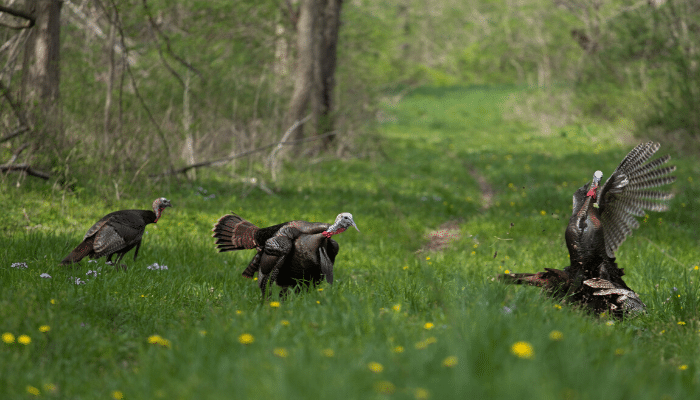Spring turkey season is an exciting way to spend time in the great outdoors. If you are new to turkey hunting, you may not know that turkeys are a challenging bird to hunt because of their extraordinary eyesight and hearing. Turkey hunting is a thrilling, highly addictive sport, and we’re here to tell you all about it.
Spring Turkey Hunting 101 is now in session — explore more below.
Take Time to Scout
In a perfect world, you would be able to set out into the woods the night before your hunt to scout for turkeys. Ideally, you’ll spot them flying into their roost. If you’re unable to scout on the eve of your hunt, don’t worry. You can use a locator call to find the turkeys in the morning. If scouting is unsuccessful and you are unable to get a response with your locator calls, just set up where you think the turkeys are or where you’ve seen them previously.
Setting Up
Because turkeys have exceptional hearing, you need to make sure you are silent when setting up in the morning. Of course, you’ll want to get as close to the roost as possible, but you don’t want to scare the turkeys. The closer you are, the more likely you’ll be able to hit your target. But the closer you get, you run the risk of spooking the birds. Aim to get 100-150 yards away from the roost.
If you are unsure where to set up, try setting up around the edges of a field. Turkeys tend to fly down from their roost into fields if one is around and seemingly enjoys hanging out in sunny patches. Soon after leaving their roost, gobblers will head for the hills. For your second set up, find a ridge, slope, or hill where the turkeys might go, that is, unless you hear or see them elsewhere.
Use a Decoy
A decoy is an essential part of your hunt. We recommend using at least one decoy, as it will increase your odds of a successful hunt. The more realistic your decoys look, the better. So a lure that can move (a bobblehead, swiveling, or pivoting one) will increase your odds even more.
Place your Jake, hen, or Tom decoys in a place that will help you get your shot. If you know where the turkeys are located, place the bait on the other side of your cover. If you do this, the turkeys will have to walk directly in front of you, giving you an unobstructed shot.
Use a Call
Turkeys are typically eager to respond to calls, so make sure you use one! There are many different types of calls available. We say use the one you feel most comfortable using. If this is your first turkey season, try a few different kinds and enjoy the experiment! Turkey calls aren’t too expensive, besides, having a handful of calls will come in handy for future hunts.
Contact R & K Hunting Company
For more exciting hunts, contact R & K Hunting Company to schedule your next hunting expedition in Utah or Wyoming. We take the stress and burden of planning your adventure away. For a once-in-a-lifetime hunting experience, call us to schedule today.


